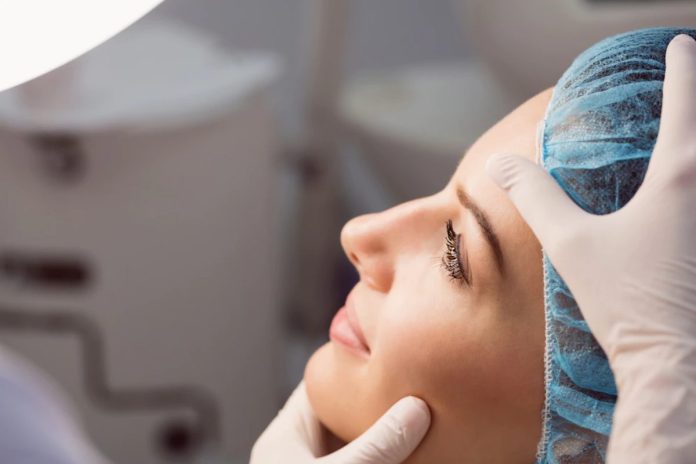Have you noticed that your upper eyelids have begun to droop? Or maybe you have some extra puffiness beneath your eyes? Ever feel exhausted even after getting a good night’s sleep? Such feelings may prompt you to think about cosmetic eyelid surgery.
Eyelid surgery is a commonly performed procedure. In fact, around 200,000 Americans undergo this cosmetic surgery every year. This popularity has to do with the fact that it is so successful in terms of restoring a more youthful look to the eyes.
So, are you considering eyelid surgery? If yes, keep reading!
What Is Eyelid Surgery?
Eyelid surgery improves eyelid position, shape, and symmetry. The goal of eyelid surgery is to reduce or reposition skin and fat on the upper and lower lids to reduce ptosis and increase your field of vision (from sagging skin).
The surgeon also performs eyelid surgery maybe for cosmetic reasons such as:
- Blepharoptosis (i.e., drooping upper eyelid),
- Ptosis
- Asymmetry (i.e., uneven lid thickness)
- Hooding (i.e., upper lid loss)
- Sagging (i.e., lower lid loss)
Types of Eyelid Surgery
There are two types of eyelid surgeries: upper blepharoplasty and lower blepharoplasty.
Upper blepharoplasty (upper eyelid surgery) addresses the upper eyelid. This addresses hooding, droopiness, and heaviness. When these conditions are severe, they not only add to an aged and tired appearance, but they can also interfere with peripheral vision, making routine activities, like driving, more complicated (and even dangerous). Upper eyelid surgery tightens the skin and tissues to reopen the eyes and expose your beautiful gaze.
Lower blepharoplasty (lower eyelid surgery) addresses the area beneath the eye. Commonly corrected symptoms involve puffy bags beneath the eyes. Here, fat is removed or repositioned to smooth the area.
What Does Eyelid Surgery Involve?
The surgeon will first choose the most effective anesthetic technique. Incisions are then made. For upper eyelid surgery, the incision is made along the natural crease. For lower eyelid surgery, the incision is made just beneath the lower lash line or inside of the lid (depending on the specifics of the surgery).
Then, excess fat, muscle, and skin will be removed or repositioned. This process creates a larger opening for your eyes to sit comfortably.
Eyelid surgery recovery usually lasts between one and two weeks. You may experience bruising, swelling, and discomfort. You may also need to wear an elastic bandage for some time after surgery to support closed eyelids.
Risks Involved in Eyelid Surgery
Risks associated with surgery include anesthetic response and blood clots. Other uncommon dangers of eyelid surgery include:
- Bleeding and infection
- Inability to close one’s eyes or other issues with the eyelids
- Significant scarring
- Temporary blurry vision
- Damage to the eye muscles
- Itchy and dry eyes
FAQs
How Much Does Lifting an Eyelid Cost?
According to the American Society of Plastic Surgeons, a typical eyelid surgery cost runs roughly around $3,026 for the surgeon’s fees. However, there are other costs besides this amount. These extra costs cover things like the cost of the operating room, anesthesia, and other necessary medical supplies.
Is Having Eyelid Surgery Worth It?
Most patients believe their upper blepharoplasty was worthwhile, and 95% of RealSelf users rate eyelid surgery as “Worth It.” Patients express their satisfaction with the operation for the following reasons:
- Upper blepharoplasty is a reasonably priced treatment.
- The surgery provides significant, notable aesthetic enhancement. Patients appear more awake, interested, and lively.
- Recovery is quick and incredibly doable.
- An upper eyelid lift might enhance peripheral vision for some patients.
Cons of Having Your Eyelid Surgery
Several potential adverse effects of blepharoplasty include:
- You might encounter adverse effects: Following surgery, swelling and bruising are typical and expected.
- Your doctor might overdo it: The doctor may remove too much skin or fat from the eyelids during surgery.
- Some aftercare is necessary to preserve your outcomes: After having eyelid surgery, you can enjoy your awake and revived appearance for many years. However, the process of aging naturally will continue. Simple precautions like sunscreen and abstaining from nicotine can help protect your results.
What Distinguishes Ptosis Correction From Blepharoplasty?
Ptosis correction is primarily functional, unlike upper blepharoplasty, a cosmetic operation. Ptosis restoration includes tightening or shortening the muscle for the eyelid muscle to lift and open the top eyelid well.





















